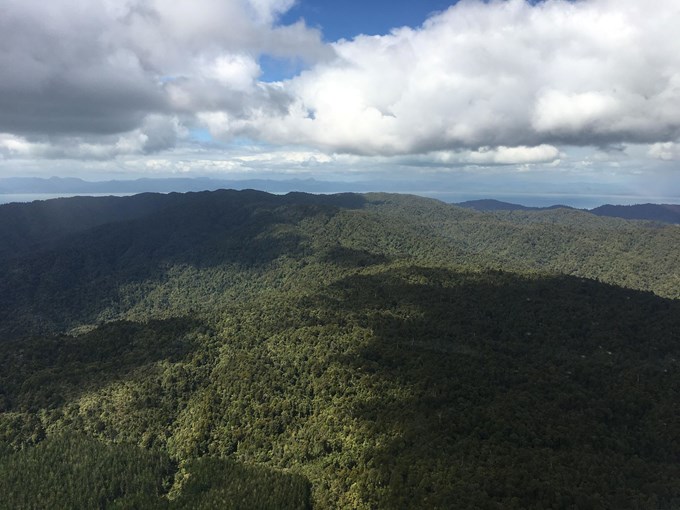Six months after the final application of 1080 in the Hunua Ranges regional parklands, the caution over the treatment area has been lifted.
The caution period is one of the operational requirements of using a toxin like 1080 and is a reminder to visitors that they may encounter bait that hasn’t yet broken down or pest animal carcasses.
Hunua Project operational lead and Auckland Council’s Regional Parks Manager Rachel Kelleher says in addition to the required time passing since bait application, monitoring of bait and carcass breakdown carried out under different environmental conditions has also assisted in informing the caution period.
“Carcass and bait breakdown monitoring is carried out to assess how 1080 baits, and animals that have consumed bait, break down,” she says.
Pest animal carcasses and 1080 pellets collected after bait application were placed in secure cages in locations that ranged from deep forest cover to more exposed areas. Visual assessments and laboratory testing was carried out on both carcasses and bait to determine whether the toxin was still present.
“The weather plays an important part in this process and the ranges has received a good amount of rain and warm temperatures over the last six months.”
“A very important message throughout this programme has been the welfare of dogs in and around the ranges, Ms Kelleher says
“Having the caution period for the 1080 operation in place has been important in making sure dogs are safe however, it’s still important for dog owners to keep a close eye on their pets and prevent them from scavenging – regardless of where they are, there is always a risk of poisoning or illness when dogs scavenge on a dead animal.
“It’s important to remember that it’s a requirement for all dogs to be on lead when in the park – and this is the case at all times.
“We are currently undertaking ground-based pest control on areas of parkland and some surrounding private land that wasn’t treated during the aerial operation. We ask all visitors to please continue to take note of any warning signage in relation to this work.”
Warning signs for the 1080 operation will be taken down and messages about the caution period are being removed from the council’s website. Information boards about the pest control operation will remain up at major car parks and arrival areas in the ranges and information about the programme is on Auckland Council’s website.
Pest animals at all-time low
Following last year’s operation pest animals in the ranges are at an all-time low with rat and possum densities significantly reduced across the operational area. When planning for this operation began, rats were tracking at 75 per cent saturation across the ranges and possum numbers had begun to increase again following the 2015 operation.
Post-operational monitoring has indicated that the operation has been extremely successful. Pest species have dropped dramatically following the operation with possum densities at 0.23 per cent and zero per cent for rats.
Species monitoring is also a strong indicator of success. Following the 2018 pest control operation, the highest number of fledged chicks since the kokako protection project began was recorded from monitored pairs.


